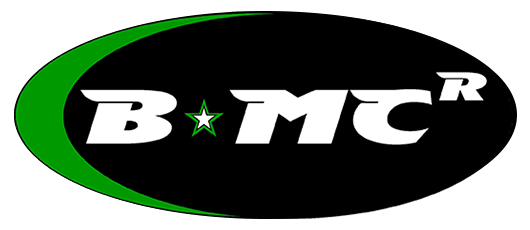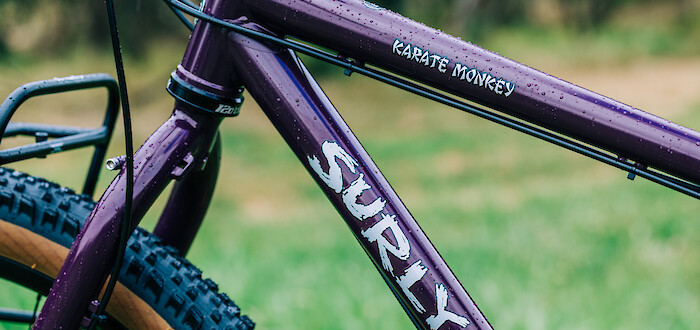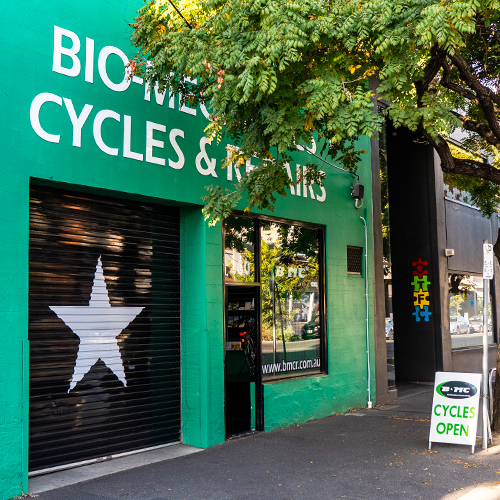What to do in a bike accident

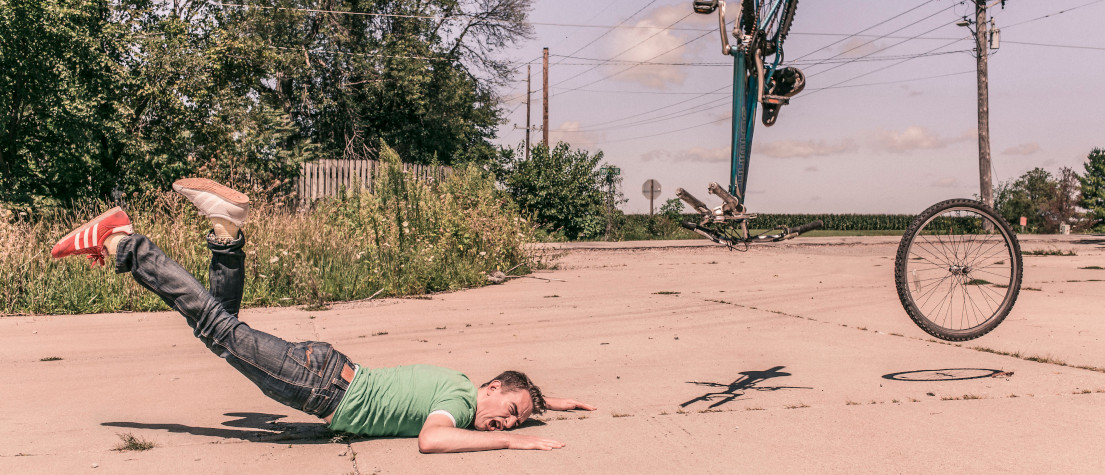
The best way to handle a bicycle crash
You’ve crashed your bike, or one of your friends has just ploughed face-first into a guard rail. There’s blood, confusion and panic.
What do you do?
Most people feel helpless and unprepared in an emergency situation. But you don’t have to be. We’re going to run you through exactly how to handle a bike crash, from checking for danger and assessing injuries (including shock and concussion) to dealing with bleeding and knowing when to call an ambulance. We’ll even show you what to do if your accident involves a car.
You may not always be able to prevent an accident happening, but with these tips you’ll be able to handle it with confidence.
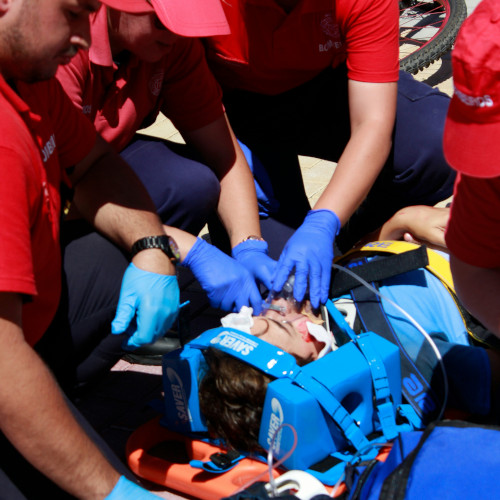
What to do after a cycling accident
Straight after a crash, even before you register any pain, shock kicks in.
When this happens, the first instinct is usually to panic, which only makes things worse.
Stop, and take a moment. (Yes, we know this can be easier said than done, but at least try.)
Keeping a clear head will be critical to keep yourself—and other riders—safe.
Is there any immediate danger?
First, check that there are no major injuries – no bones sticking out, no loss of feeling in the limbs.
If you’re banged up but can move OK (e.g. your spine isn’t in pieces), the next step is to ensure you’re not in danger of being hit by an oncoming car or rider.
On a trail? Get off it.
On a road? Get off it.
Got friends with you? Ask them to act as traffic marshals/trail lookouts to avoid a pile-up.
You need to move to a safe spot that’s not only well clear of other cyclists but also any vehicles. A paramedic friend once treated multiple victims at a bike crash scene: firstly, the cyclist who suffered a heart attack, and secondly, his riding buddies who were hit by a car while trying to look after the first guy because the group was blocking the road.
So get yourself (or your injured friend) out of the way as soon as you can.
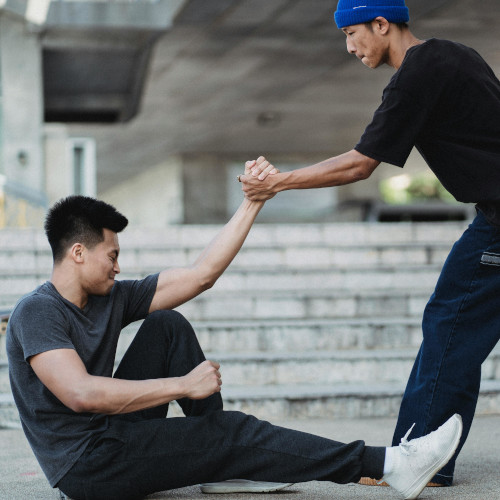
Is it OK to move a hurt cyclist? What if I make things worse?
Moving someone to a safe area takes precedence over pretty much everything else. If it’s a choice between hauling them off the road and potentially making their injuries worse or leaving them where they are and having someone drive/ride over them, hauling is the right choice every time.
Some people also stress about being sued if they accidentally hurt someone while trying to help them, but you don’t need to worry; that’s what the Good Samaritan legislation is for. This clause protects you if you try to help someone in good faith in an emergency situation.
Australia: we’re litigious, but not that litigious.

What if you’ve broken a bone?
If you or your friend has a broken bone, that area needs to be kept as immobile as possible.
To help with this, especially while moving to a safe spot, use a blanket or jacket to support the area. In a pinch, even a jersey or t-shirt will work, as you can see here.
Then, of course, call an ambulance.

Check your head
No broken bones? It’s tempting to try to laugh it off and get straight get back on the bike, but don’t. You can accidentally make things worse by assuming—or pretending—everything’s OK.
Shock and concussion are two conditions which can be hard to identify early but can be life-threatening, so let’s check them out now.

How do I know if I have concussion?
Did you hit your head? If you can’t remember, check your helmet for any impact points.
Initial symptoms include:
- Confusion
- Disorientation
- Blurry vision
- Headache
- Loss of balance
- Ringing in the ears
- Nausea or vomiting
- Drowsiness or fatigue
- Loss of consciousness
If your friend is the one who crashed, take note if they seem slow to respond to questions or keep asking the same thing repeatedly.
Even if there’s a possibility that you/your friend have concussion, don’t keep riding – get assistance to get home, and get checked out by a medical professional a.s.a.p.
Make sure to watch out over the next few days for any other symptoms appearing (i.e. light or sound sensitivities) or for any ongoing headaches or drowsiness.
Concussion is a brain injury that affects brain function, even when it’s mild. Do not mess around with it.
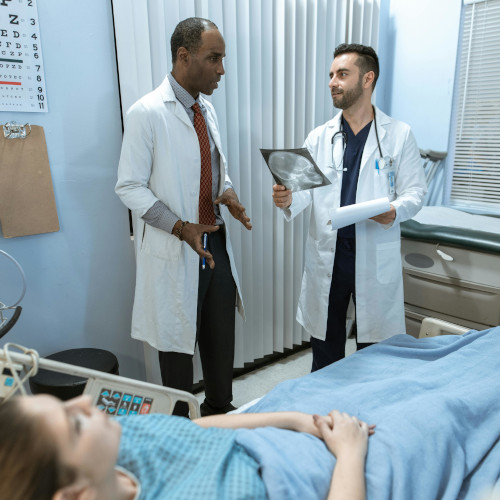
How do I know if I have shock?
Getting banged up isn’t the end of the world – gravel rashes heal, chicks dig scars – but shock can be life-threatening. Our paramedic friend’s rule of thumb is that any cyclist who’s been in a serious accident should be treated for it.
Symptoms of shock include:
- Cool or clammy skin (which means blood is being taken from the extremities to the core)
- Rapid and shallow breathing
- A weak, rapid pulse
- Enlarged pupils
- Anxiety, agitation or confusion
- Weakness
- Dizziness or fainting
- Chest pain
(Sweating is also a symptom of shock, but it’s tricky to discern from regular riding-induced sweat so you’ll want to primarily rely on the other symptoms.)

How do I treat someone for shock after a bike accident?
- Call an ambulance.
- Make the person feel physically comfortable. If they’re cold, help them to get warm. If they’re hot, help them move to the shade.
- Put them in the shock recovery position: lay them down, and elevate their legs or feet (assuming there are no broken limbs). This helps the blood flow from the lower limbs back up to the heart.
- Reassure them – stay with them and talk to them, ask them basic questions. Let them know what’s going on, but make sure to stay calm; if you’re panicking, you can make their situation much worse.
- If they’re wearing anything restrictive, loosen it as much as possible.
- Don’t give them any food or liquids*, even if they ask for it.
* Most guidelines specify that the victim should not be allowed to consume anything, however others say small, frequent amounts of water are OK. Try to use your best judgement, but err on the side of caution when it comes to giving the person anything to drink.

Control any bleeding
If you or the other rider are bleeding profusely, apply pressure to the area.
For nosebleed, make sure you’re leaning forward so the blood is going out of your nose rather than down the back of your throat. (We are not vampires, after all.)
Blood coming out of the ears? Lie down with the bleeding side towards the ground.
You’ll also want to call an ambulance.
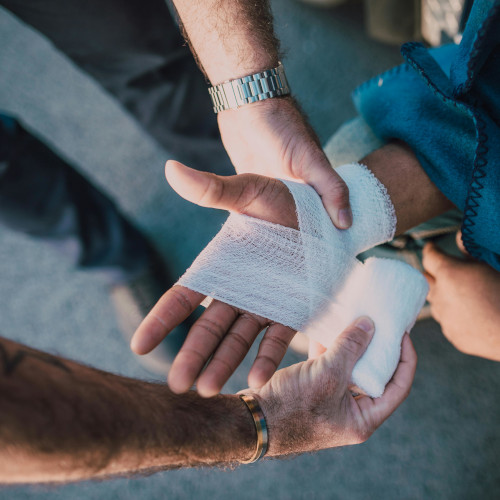
What if you’re with a rider who’s unresponsive?
- Call an ambulance. (We really shouldn’t have to tell you at this point.)
- Lie the rider on their side and check that their airway is clear, and not blocked by their tongue, food (unlikely, but check anyway) or other obstruction.
- Check for a pulse. If there’s no pulse, they may have suffered a heart attack – CPR is required immediately.
I don’t know how to do CPR.
Try it anyway – any attempt is better than nothing.
Thirty compressions of the chest, followed by two breaths.
Here’s a video where you can follow along in real time.
And once you’re home and this whole thing is over, maybe look at enrolling in a first aid course.
(Go on, do it. You'll get to play with a defibrillator.)
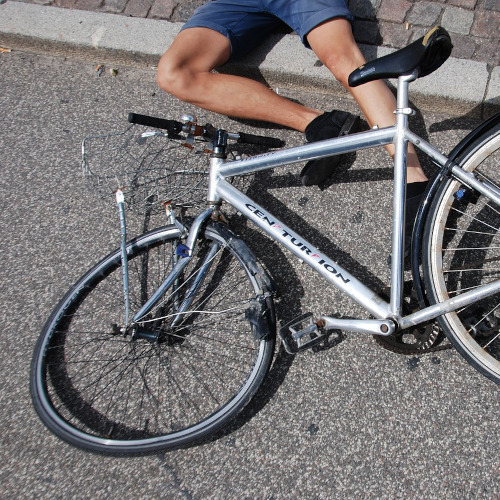
Do I really need to call an ambulance?
It’s strongly recommended to call an ambulance for all but the most minor of injuries.
As we noted before, shock and concussion can be hard to identify early on, and the repercussions of these conditions going untreated can be serious, sometimes fatal.
After all, you never hear someone say, “I really wish I hadn’t called emergency services.”

After the accident
Assuming that the crash wasn’t serious and nobody’s badly hurt, let’s get you moving again.
Before you jump back on your bike, check it over. (Again, make sure you’re out of the way of other people/cars/traffic when you do this.)
Examine the frame and forks carefully. Make sure there are no cracks or serious scratches.
Found a crack? Don’t risk making the day worse – walk your bike back instead of riding it.
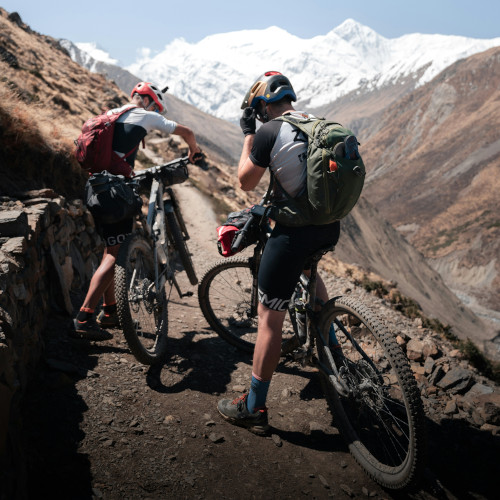
If the frame’s OK, next spin the wheels to make sure they’re straight, or at least straight enough that the brakes aren’t rubbing.
Check your shifters/levers to make sure the crash didn’t push them out of position. If they’ve moved, see if you can coax them back into the correct spot.
Next, make sure your derailleur isn’t going to go into your spokes. Hold your rear wheel off the ground and pedal while you shift through the gears.
Finally check the tyres to make sure there are no flats.
If everything’s clear, you’re good to go. But take it slowly and, of course, if you start to feel worse, stop and call for assistance. No bike ride is worth dying for.

What if you’re alone and are too hurt to walk or ride back?
This is where an app like Emergency Plus, developed by the Australian Emergency Services, could be a lifesaver.
It’s free and uses your phone’s GPS functionality to tell your rescuers where you are. (Though you will need mobile reception for it to work.)
It’s also a lot better than trying to describe exactly what part of the outdoors you’re lying in to someone who’s never ridden a mountain bike.
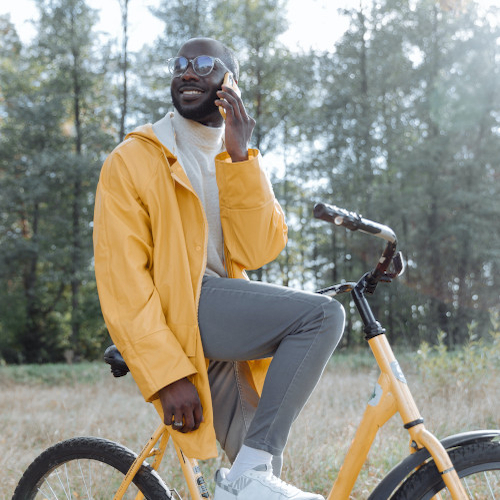
What do I do if the crash involves a car?
If you’re out riding and get hit by a car, you’re covered under your state’s road compensation scheme. For South Australians, this is that Compulsory Third Party insurance that you see whenever you renew your rego. (Cyclists also drive cars! Alert the Facebook comments section.)
We’ve heard too many horror stories of riders who’ve been hit by cars and then haven’t been in the right headspace to know what to do, so here it is in a nutshell.
Immediately after the impact:
- Get the driver’s contact details, including their drivers’ license and number plate, plus the contact details of any witnesses.
- Take photos of the scene of the accident, and make notes of the road surface, weather conditions, and position of the vehicle(s).
- Wait for the police to arrive. If there have been injuries to you or to property, you and the driver are both obligated to remain at the scene.
Once you've left the scene:
- Keep a record of doctor’s visits/hospital stuff. Document any injuries.
- Notify your insurance company.
- If the driver’s insurance company contacts you directly, do not negotiate with them. Tell them to go through your insurance company instead.
- Keep all of your accident-damaged clothing/helmet/bike stuff in case you need it as evidence.
Importantly, don’t try to settle the situation with the driver on the spot, even if they apologise. Again, we know of far too many cases where a driver has initially admitted being in the wrong, only to turn around later (once the police or insurance are involved) and deny it.
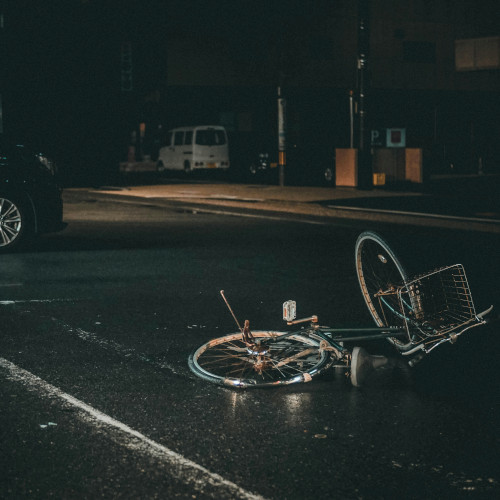
Do I have to call the police if I get hit by a car?
South Australia’s cycling laws say you must report the crash to the police if:
- anyone is injured/killed (and it also must be reported within 90 minutes);
- if contact details are not exchanged;
- if you think the damage will be over $3000 worth (and it also must be reported within 24 hours); or
- if a vehicle involved in the crash is towed or carried away by another vehicle.
These laws also dictate that if you must stop and assist any injured people if you witness a crash, but you’d do that anyway, wouldn’t you?
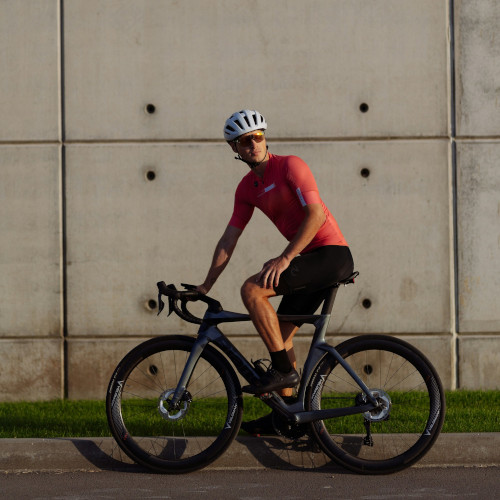
Now you know how to handle a bicycle accident
Whether one of your friends has smashed themselves into a tree or you've woken up on the side of the road wondering what just happened, these procedures will help get the situation under control.
Don't rush to get back on the bike; once you're out of immediate harm's way, take your time to go through the proper steps.
If you suspect that a head injury has occurred, even if it's not immediately obvious, always make sure to follow up with a medical professional.
This way you can help ensure that you -- and your riding buddies -- stay safe.

We can't fix a broken limb but we can fix a broken drivetrain. If yours needs some love and attention (or a post-accident service), get in touch.
